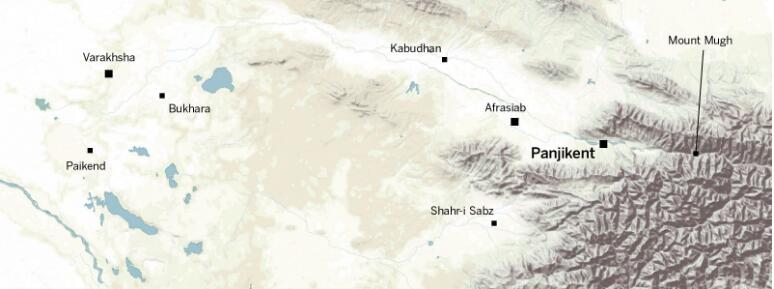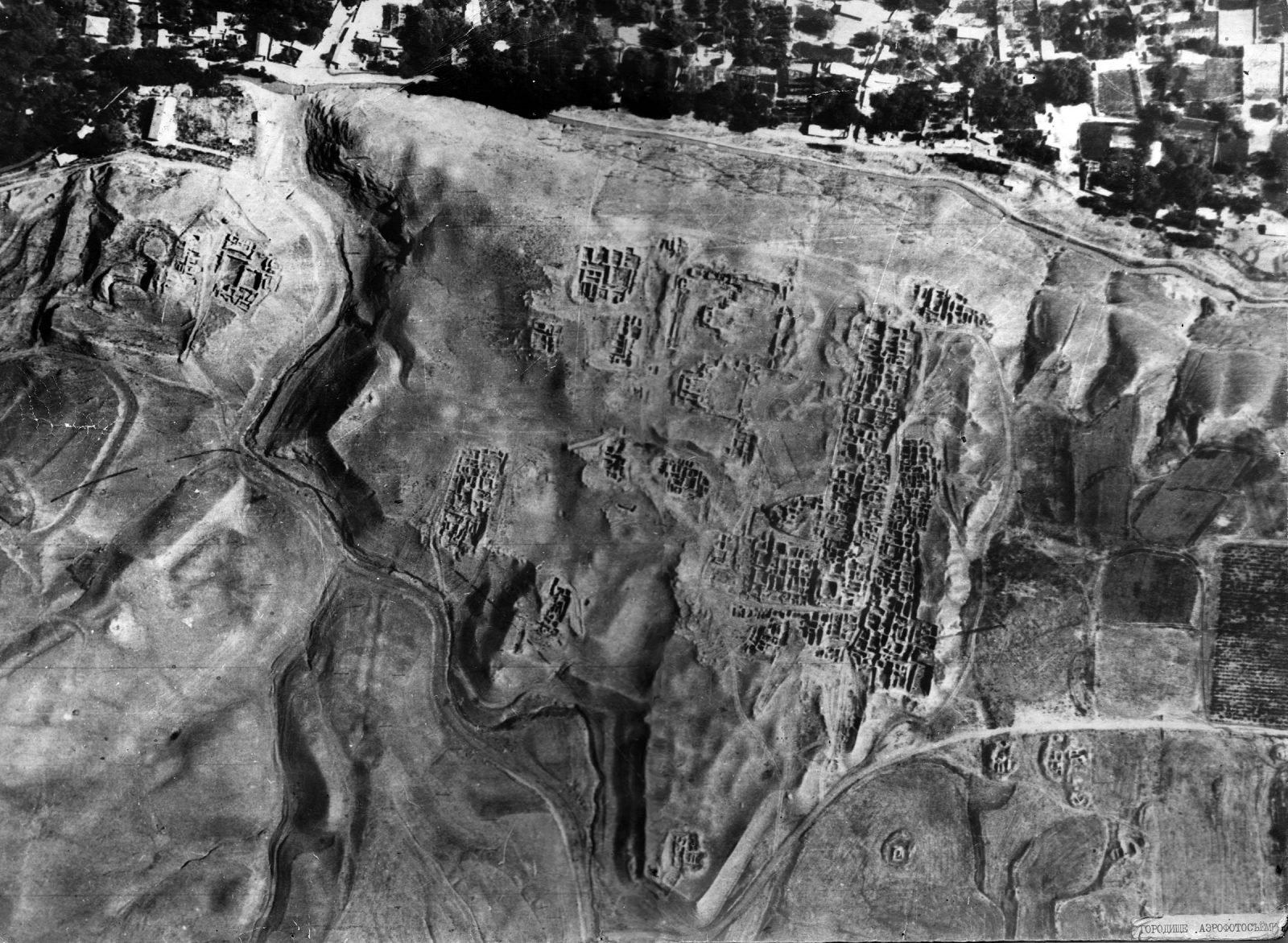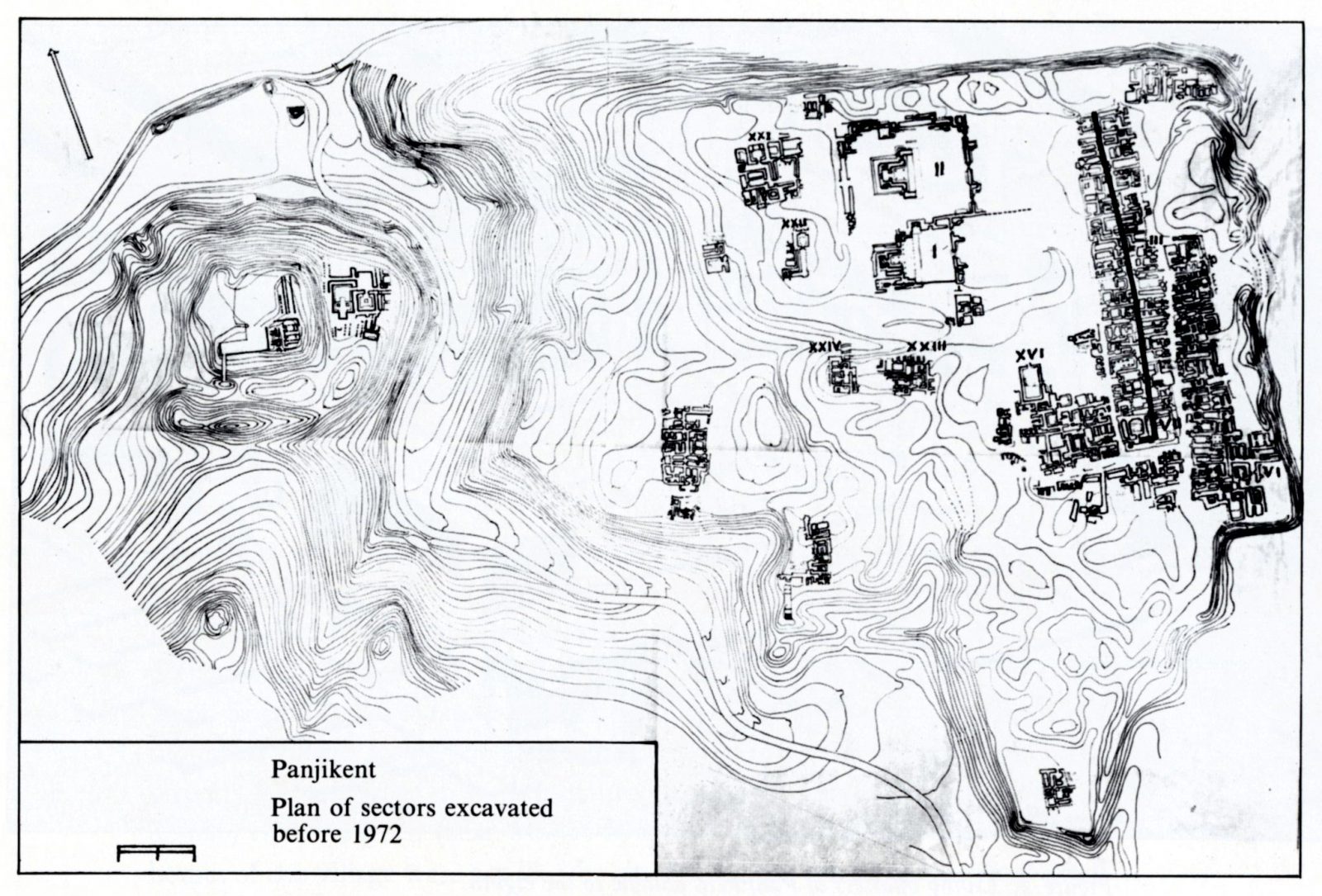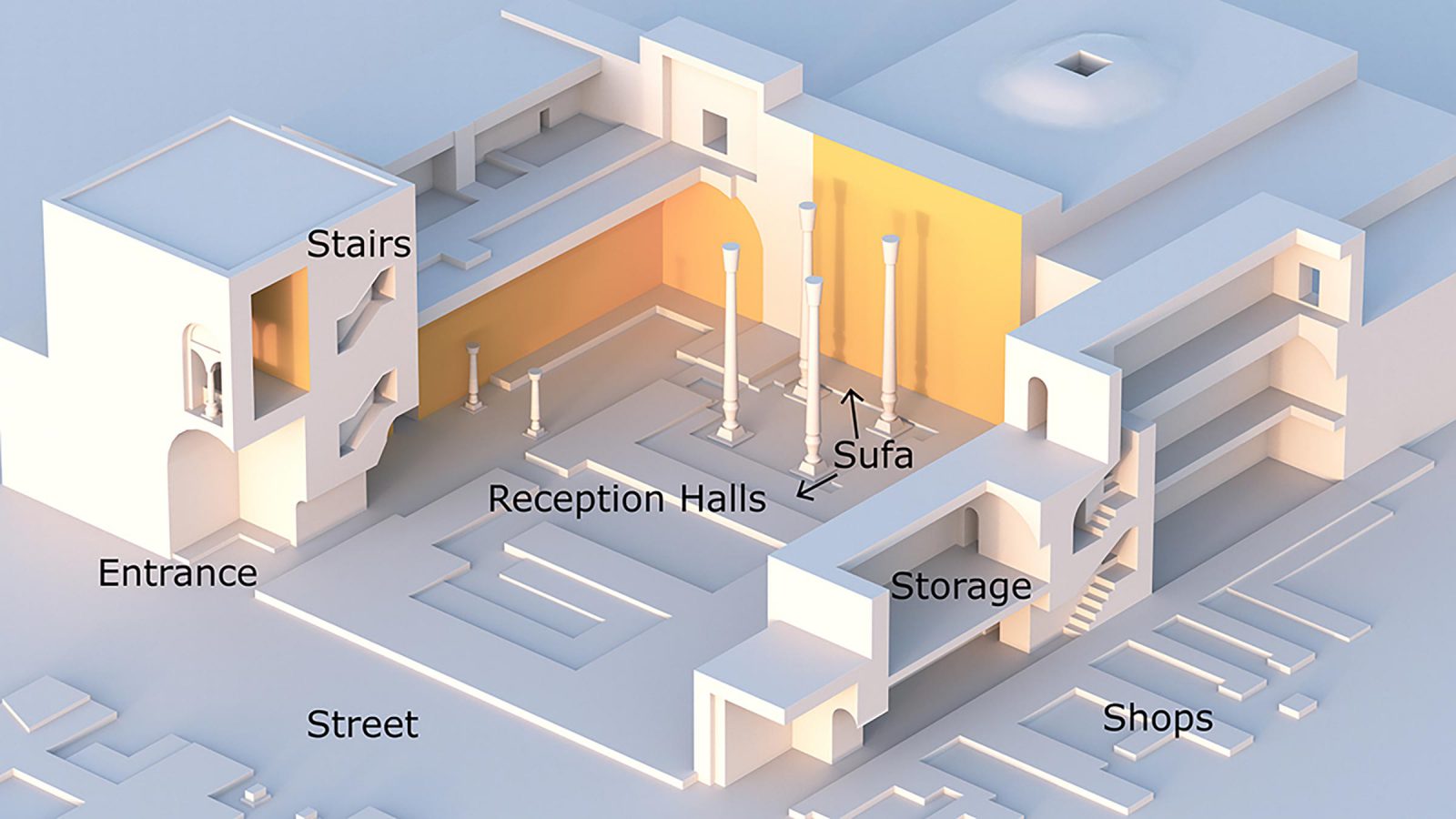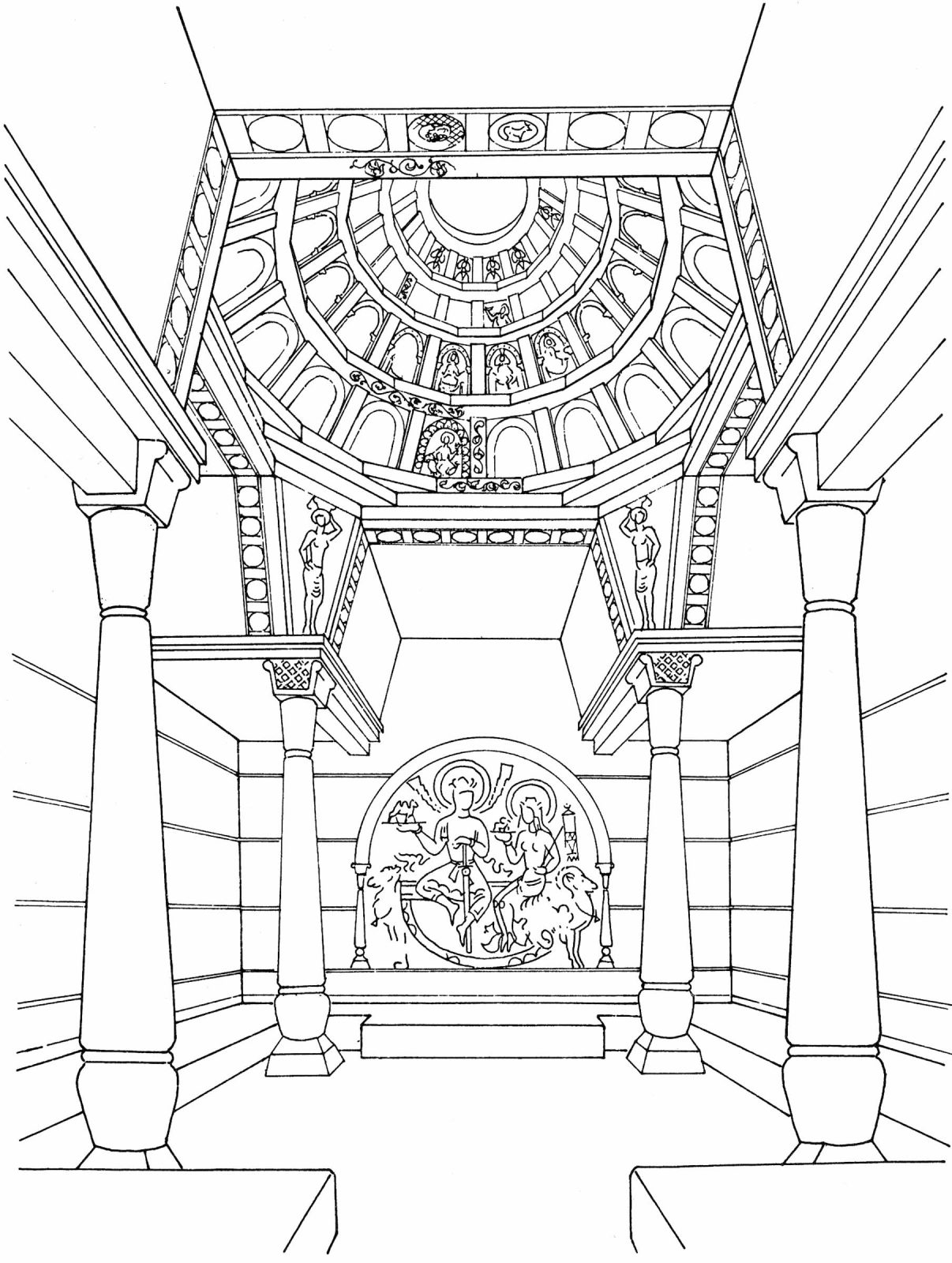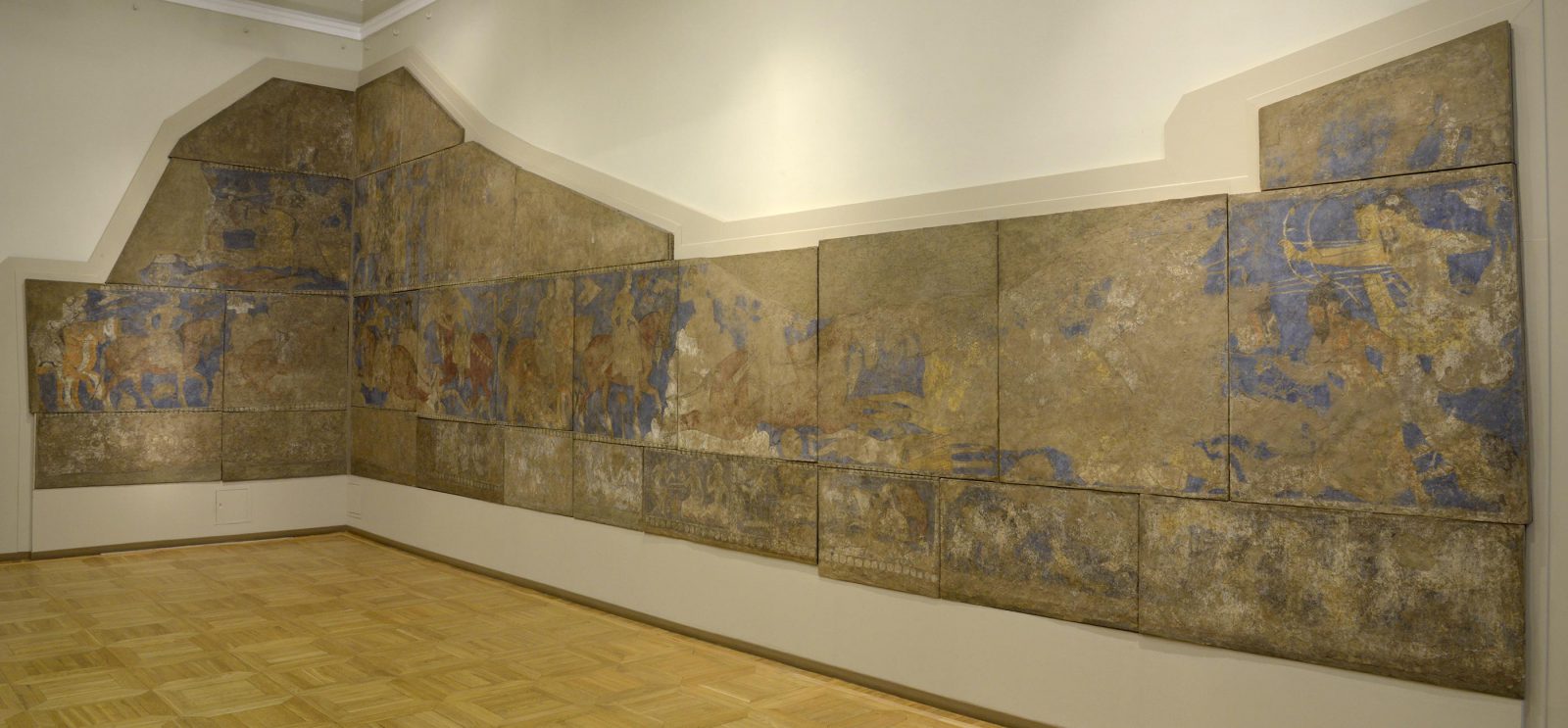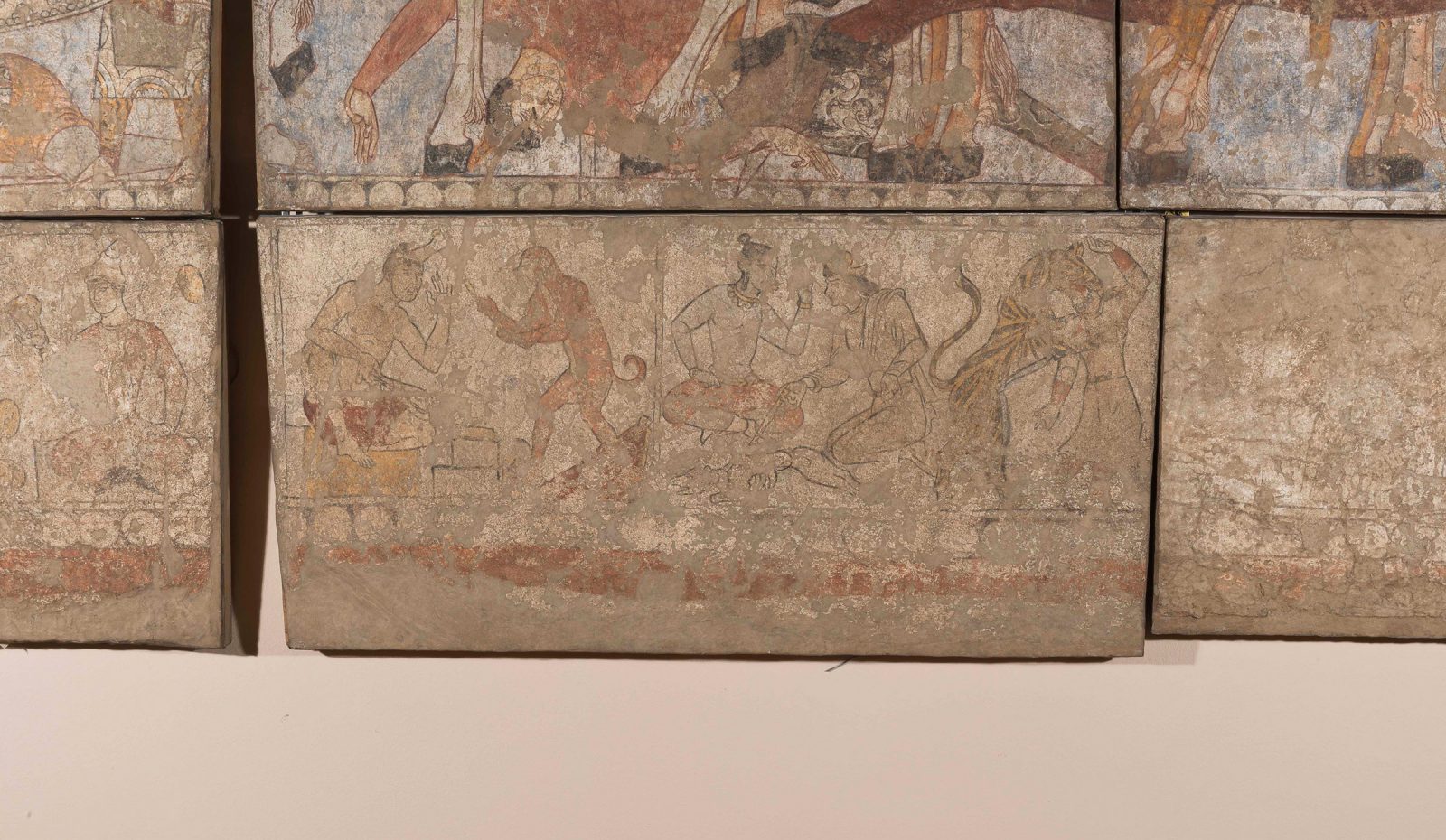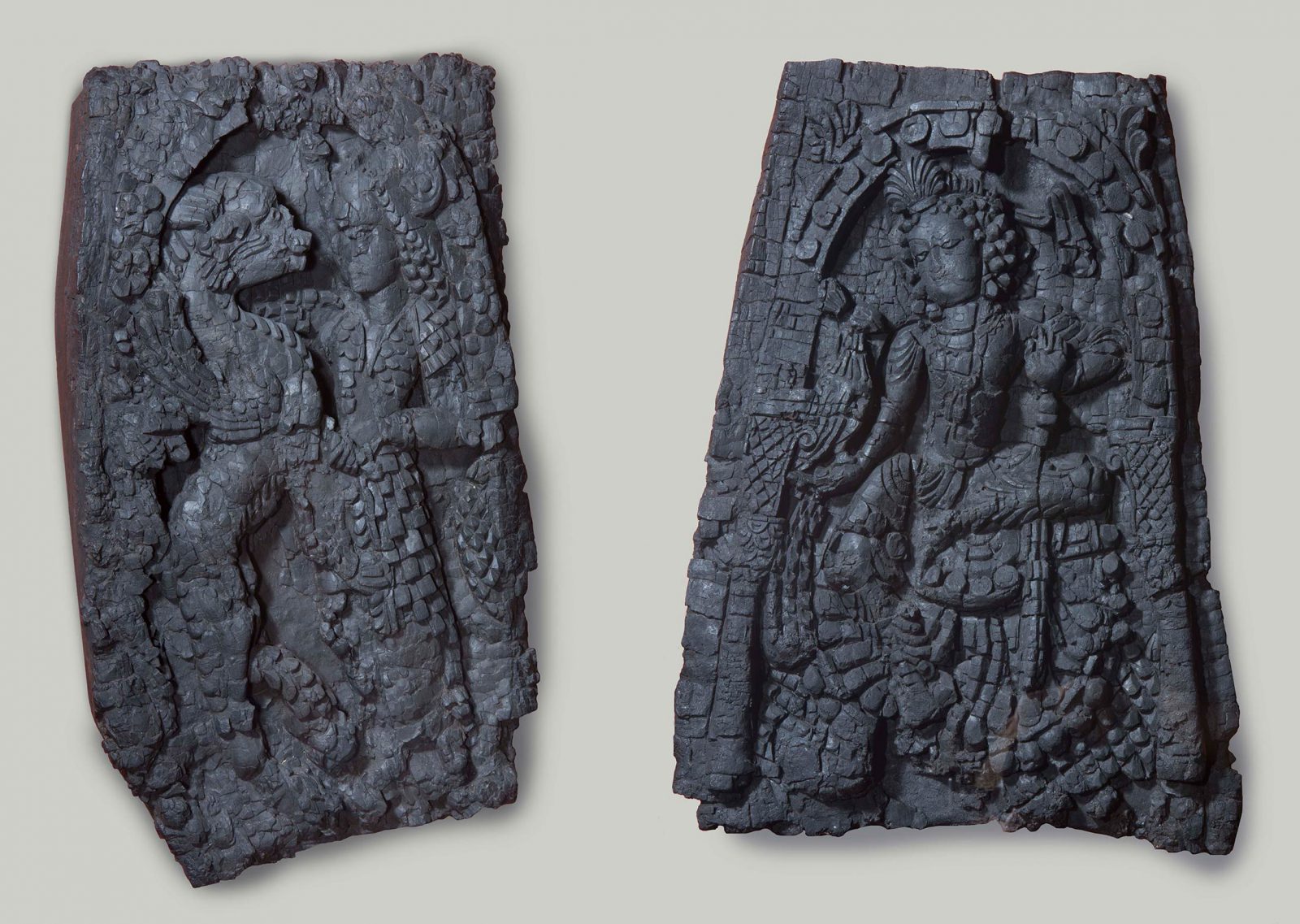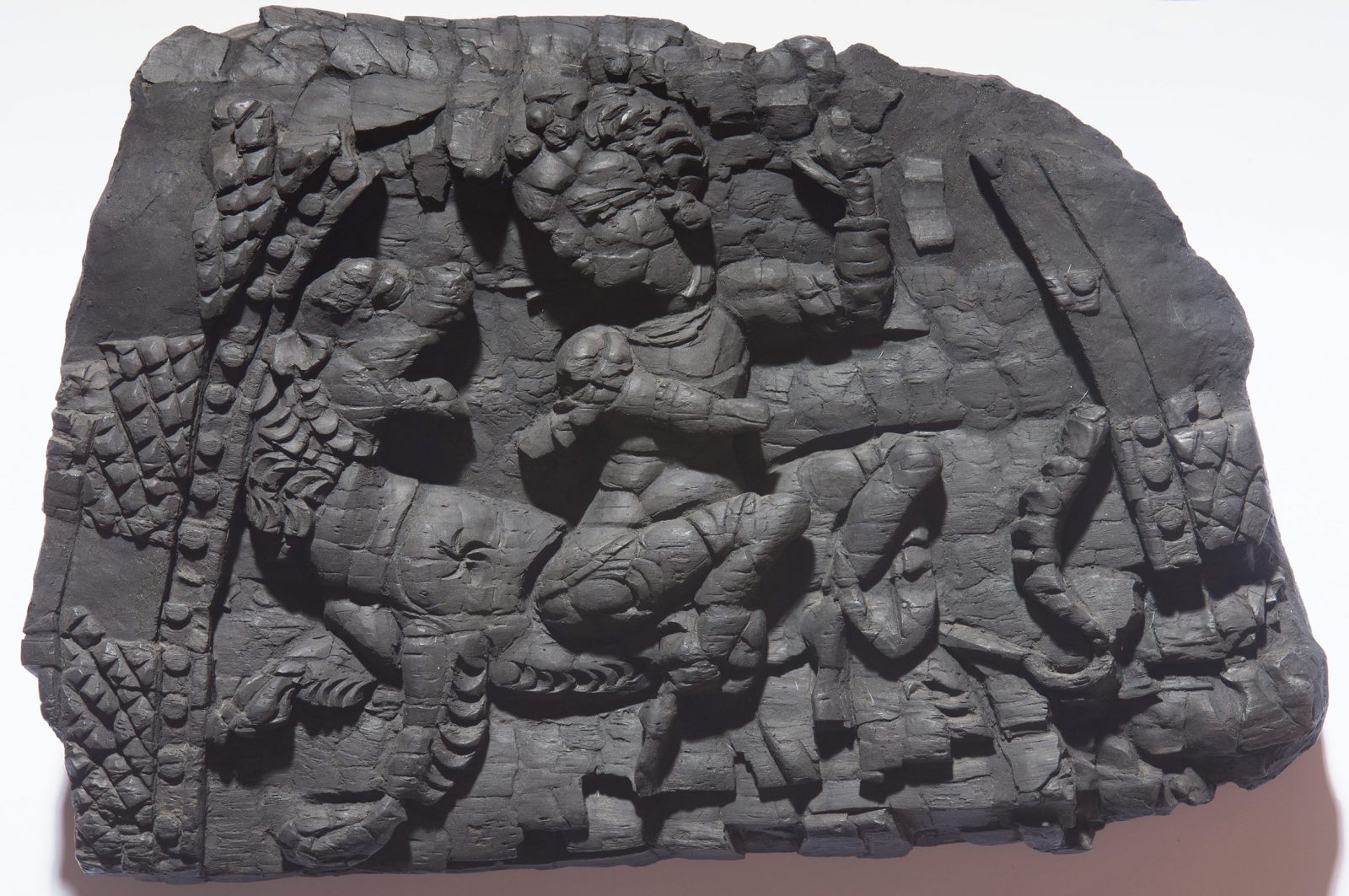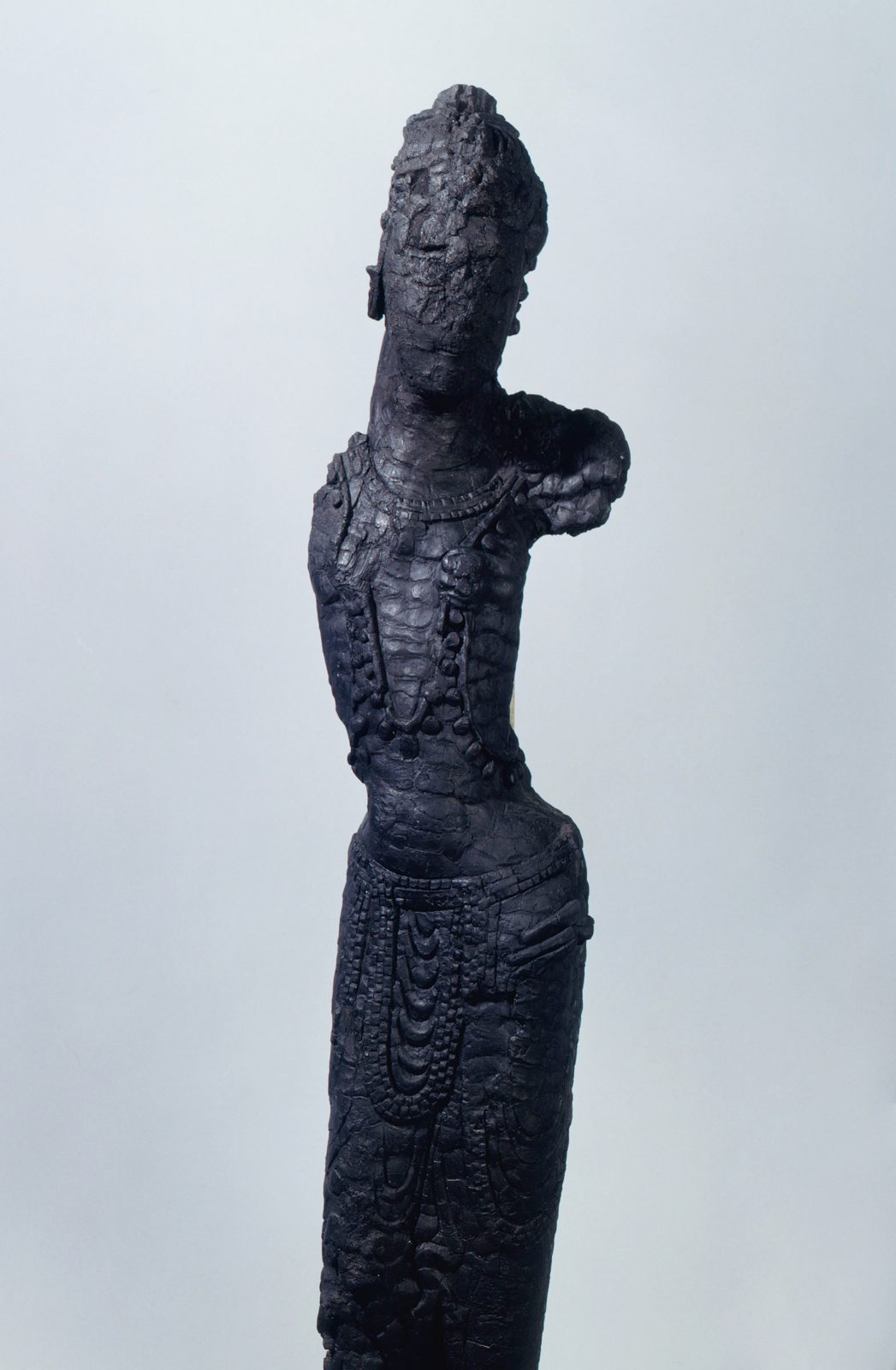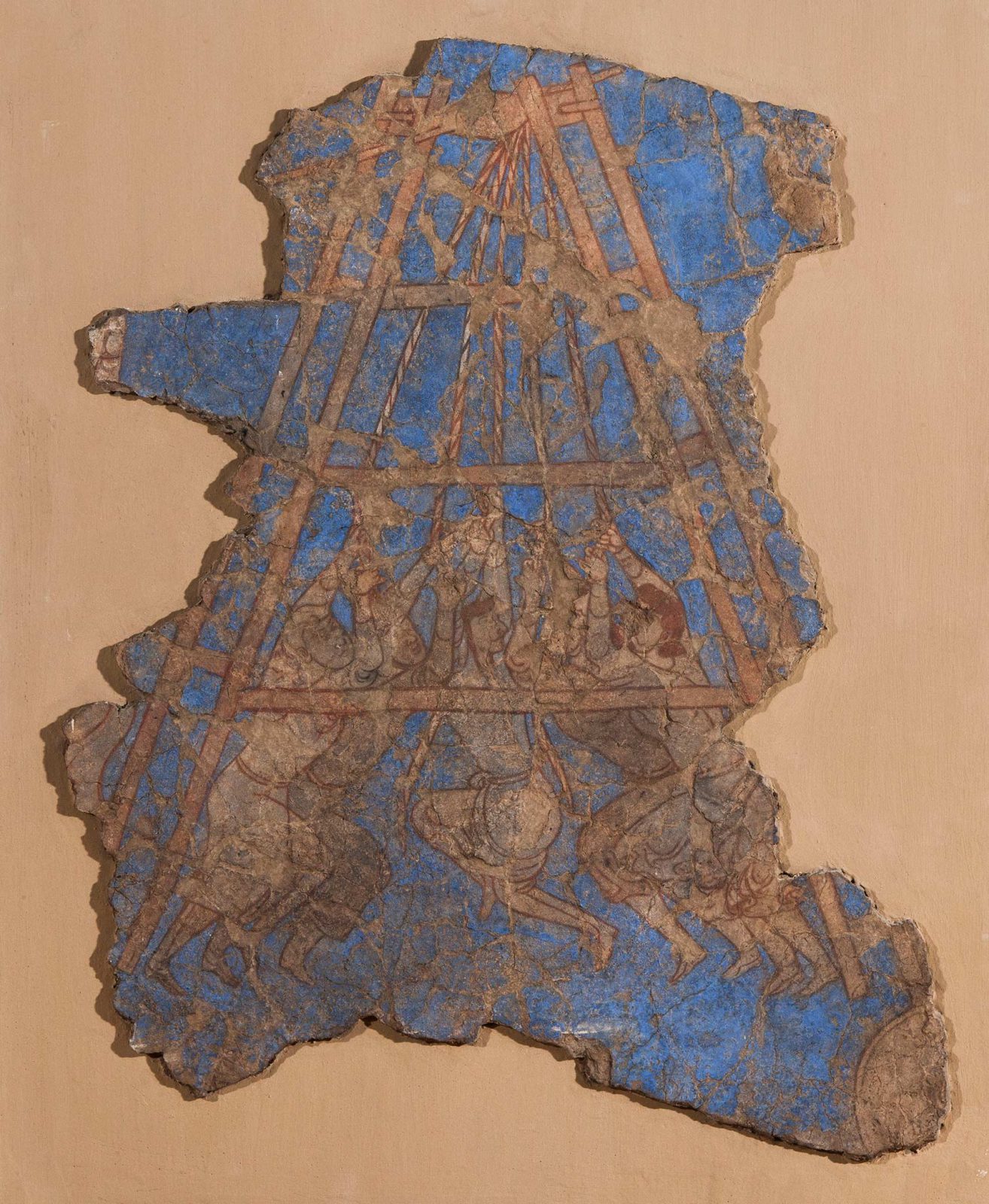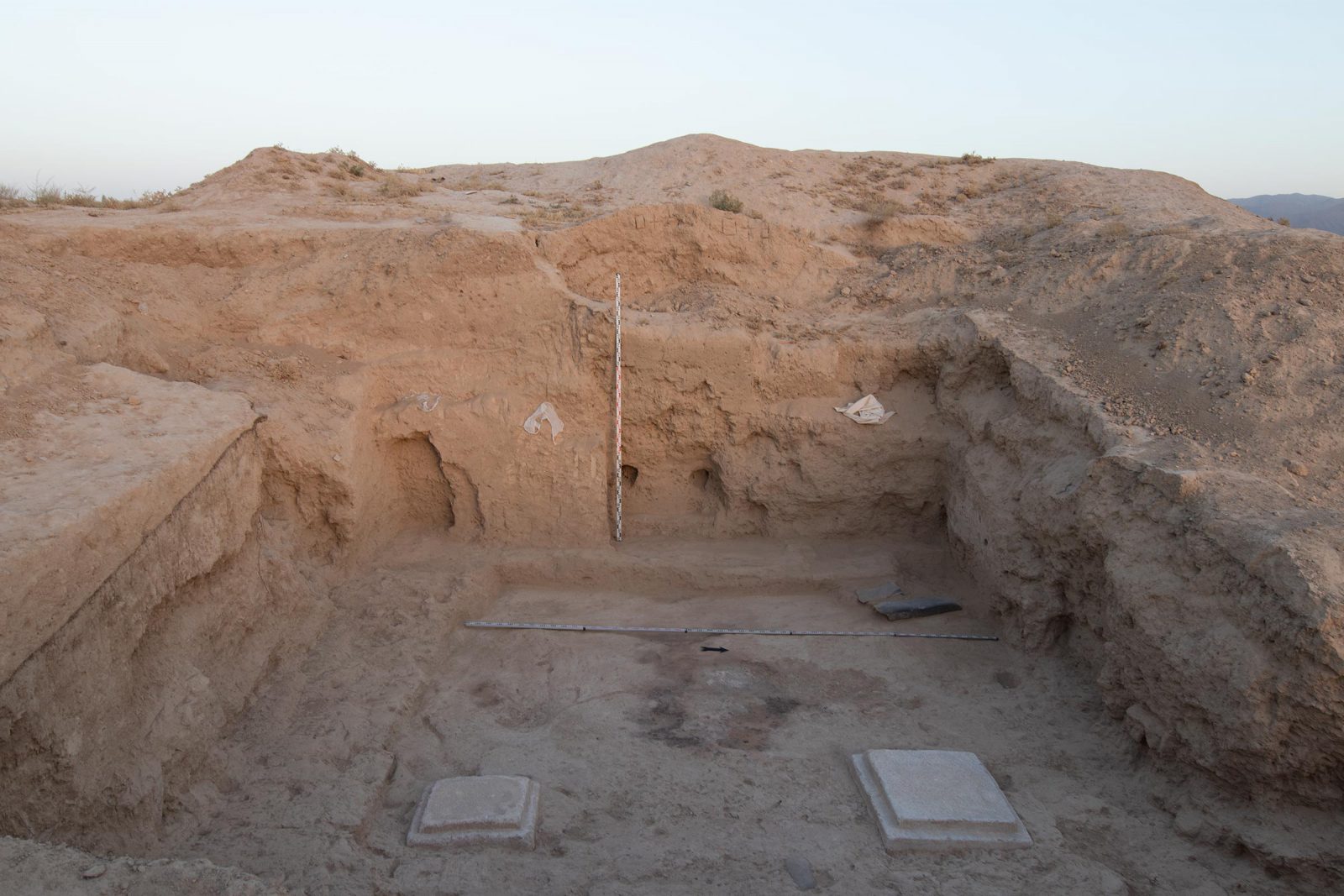DepthReading
The City of Panjikent and Sogdian Town-Planning
FIG. 2 Map of main sites in Sogdiana excavated by Soviet archaeologists during the 20th century. Emphasis here on Panjikent.
Abandoned in the latter half of the 8th century, Panjikent overlooked the Zerafshan River in a mountain valley sixty kilometers (about forty miles) to the east of Afrasiab (Old Samarkand); FIGS. 2 AND 3.
Archaeological excavations have illuminated Sogdian daily life from the 5th to the 8th centuries. Among the most celebrated discoveries are the murals, in various states of preservation, that decorated the walls of Panjikent’s temples, houses, and palace. Excavators unearthed the first of these murals in 1946 and continue to discover additional works to this day. In addition to these and other material remains, such as ceramics, glass, and metal, a trove of documents discovered in the nearby fortress of Mount Mugh bear witness to the economic and social life of the city on the cusp of the Arab–Muslim invasion in 722 CE.
FIG. 2 Aerial view of Panjikent excavation in the 1970s.
FIG. 3 Map of Panjikent, showing sectors excavated up to 1972.
After Boris Marshak, Legends, Tales, and Fables in the Art of Sogdiana (New York: Bibliotheca Persica Press, 2002), fig. 1.
A settlement of some kind existed at the site from as early as the 2nd century BCE into the 1st century CE, but it was only in the 5th century that the townspeople of Panjikent fortified it with a multistoried perimeter wall made of rammed earth. Almost four miles long, this wall protected the city from potential battles with other Sogdian city-states and, more importantly, from the nomadic groups that both traded and raided throughout the region. The city within was divided into two areas by a ravine carved by the waters from the nearby Qaynar spring; FIG. 3. A large, square citadel (called an ark or a kuhendiz) stood to the west of this ravine, overlooking the city itself (the shahristan) to the east (see elevated area on left side in FIG. 3). In the northern quarter of the city, a rectangular area about three acres in size served as the religious center (see I and II on map in FIG. 3). Its foundations were among the earliest buildings recovered at Panjikent, going back to as early as the first half of the 5th century.
Two temples stood on artificial platforms within this sacred precinct, which priests entered by means of a ramp and a portico gateway (aivan). Temple I was dedicated to Adhvagh, the “great god,” as the Sogdians called Ahura Mazda, the chief deity of the Zoroastrian/Mazdean pantheon. Temple II was dedicated to Nana, the patron goddess of Panjikent, but it also housed chapels dedicated to several local, Iranian, and Hindu deities, all of which reflect a distinctly Sogdian acceptance of other religious traditions. Within the sanctuaries, priests organized ritual processions and performed rites involving lighting fires on altars in front of carved sculptures set into large niches. On some holidays, Panjikenters made food offerings at the temple to celebrate their ancestors and held feasts within the temple. Murals throughout the temples depicted deities and donors who sought divine blessings.
In the 5th and 6th centuries, the area adjacent to the temples filled in with modest houses of sun-dried clay brick or pressed mud (pakhsa) roofed with low, wooden ceilings, all laid out in a grid. To the south of the city, beyond its walls, lay the small structures (naos) in which families placed the ossuaries of their relatives. Set on benches or within niches in the walls, these ceramic containers contained the defleshed bones of the dead. In the 6th century, a new palace decorated with hunting murals was added to the northern portion of the citadel; around the same time, the city walls were rebuilt to include the expanded urban core, which had nearly doubled in size from the 5th-century city.
The late 7th and early 8th centuries marked the pinnacle of urban life in Panjikent. By that point, the earlier one- and two-story houses had given way to larger two- and three-story structures. The wealthiest residents of the city built rows of small, single-occupancy workshops and stores along the street, which they could lease to craftsmen or use themselves. These shops surrounded but did not open into the luxurious houses of their owners, thereby maintaining a division between public shops and private residences.
Residents and visitors alike entered the houses themselves through arched portals built directly onto the street. These led to barrel-vaulted hallways and stairwells that connected the many rooms used for sleeping, eating, and storing household and commercial goods. At the center of these residences, visitors found lavishly decorated reception halls; FIG. 4. Within these halls, carved wooden columns supported double-height ceilings pierced by a central oculus (a small geometric opening); FIG. 5. A low bench (sufa) made of plaster-covered earth ran around the perimeter of the room, sometimes forming a low platform that extended out toward the center from the main wall. Small hearths or altar-ovens were built on or near these platforms, allowing the owner to make his own private offerings of food as well as to celebrate feasts that echoed the public spectacles of the temples.
FIG. 4 Reconstruction of a Panjikent house. Cut-away rendering of large house (Sector XXIV), Panjikent.
Courtesy of Alexander Brey.
FIG. 5 Reconstruction of a reception hall of a Panjikent house, B. Marshak and E. Buklaeva.
After Boris Marshak, Legends, Tales, and Fables in the Art of Sogdiana (New York: Bibliotheca Persica Press, 2002), 16, fig. 10.
The paintings decorating these reception halls were organized into registers and fell into three categories, distinguished from each other by their scales. Given special emphasis were Sogdian deities (often Nana), painted in monumental scale, sometimes several meters high. The other walls bore several registers depicting epics and legends (FIG. 6; see VI on map in FIG. 3).
FIG. 6 Rustam Cycle (installation view of north and east walls). Panjikent, Tajikistan (in ancient Sogdiana), Site VI:41, ca. 740 CE. Wall painting. The State Hermitage Museum, St. Petersburg, SA-15901-15904.
Photograph © The State Hermitage Museum.
At the base, just above the sufa, a border of smaller panels presented episodes from fairy tales and animal fables like the Panchatantra (FIGS. 7 AND 8; see III on map in FIG. 3).
FIG. 7 Two Fables: The Blacksmith and His Ape Assistant; The Tale of the Wise Men Who Brought a Tiger Back to Life (first register of the Amazon Cycle). Panjikent, Tajikistan (in ancient Sogdiana), Site XXI:1, ca. 740 CE. Wall painting; H. 51 × W. 103.5 cm. The State Hermitage Museum, St. Petersburg, SA-16205.
Photograph © The State Hermitage Museum.
FIG. 8 Goose Laying Golden Eggs (first register of the Amazon Cycle). Panjikent, Tajikistan (in ancient Sogdiana), Site XXI:1, ca. 740 CE. Wall painting; H. 50 × W. 137 cm. The State Hermitage Museum, St. Petersburg, SA–16203.
Photograph © The State Hermitage Museum.
In some of these reception halls, the ceiling was decorated with painted and carved wooden panels depicting gods, aristocratic hunters, and elaborate vegetal motifs (FIGS. 9 AND 10; see III and XXII on map in FIG. 3), along with wood caryatid figures (FIG. 11; see XXIII on map in FIG. 3) at the transition between the room below and the dome. Elsewhere within these houses, paintings of religious offerings, aristocratic banquets, and hunting parties intermingled with ornamental patterns of flowering plants and geometric shapes.
FIG. 9 (Left) Battle between Hero and Winged Lion; (right) Deity with a Peacock. Panjikent, Tajikistan (in ancient Sogdiana), Site XXIII:57, late 7th century CE. Charred wood; (left) H. 57 × W. 35 cm; (right) H. 56 × W. 40 cm. The State Hermitage Museum, St. Petersburg, Russia, SA-16231-16230.
Photograph © The State Hermitage Museum.
FIG. 10 Goddess on a Lion. Panjikent, Tajikistan (in ancient Sogdiana), Site VII:11, 1st quarter of 8th century CE. Charred wood; H. 28 × W. 41 cm. The State Hermitage Museum, St. Petersburg, Russia, SA-16233.
Photograph © The State Hermitage Museum.
FIG. 11 Caryatid Figure. Panjikent, Tajikistan (ancient Sogdiana), Site III:47, 1st half of 8th century CE. Charred wood; H. 115 × W. 21.5 cm. The State Hermitage Museum, St. Petersburg, Russia, SA-15911. View object page
Photograph © The State Hermitage Museum.
These murals and carvings reveal the cosmopolitan world of their patrons: a heterogeneous group that included not only Sogdian and Turkic elites, but likely foreign merchants and others, who lived at the crossroads of Near Eastern, Indian, and Asian routes of trade and pilgrimage. Even less-affluent residents of the city occupied multistory houses decorated with wall paintings that expressed their faith and ambitions, albeit the murals were smaller than those of the aristocrats and merchants. Of the roughly 130 houses excavated in the town, one in three preserves traces of murals.
FIG. 12 Siege of a Sogdian City. Panjikent Citadel, Room 5, painted between 711 and 721 CE. Wall painting; H. 78 × W. 63 cm. View object page
Photograph © The State Hermitage Museum, St. Petersburg, SA-16227.
The rise of Panjikent in the 7th century would come to an end with the arrival of Arab-Muslim armies who fought to expand the Umayyad caliphate centered in Damascus. By 712, they successfully captured the city of Samarkand to the west. The ruler of Panjikent, Devashtich (ruled 706?–722), commemorated the defeat of Samarkand with a series of murals in his citadel palace, which depicted Umayyad siege ladders and catapults (manjanil) attacking a city (FIG. 12; see elevated area on left side of in FIG. 3). A decade later, on a late summer day in 722, these same Umayyad armies sacked Panjikent itself. The invaders plundered the palace and burned one of the temples to the ground.
After the town was subdued, Panjikent took almost two decades to recover. The Umayyad army built barracks in the citadel, and houses throughout the town were rebuilt or renovated. Some were even decorated anew with paintings of banquets and epic stories. Slowly, the Muslim rulers and their newly conquered Sogdian subjects forged a new society. Local scribes began to compose bilingual documents in Arabic and Sogdian, each beginning with a formal acknowledgment of Allah in the two languages. Although archaeologists have not discovered a congregational mosque in the city, neither of Panjikent’s two main temples would ever function again.
By the 780s, however, the people of Pajikent had largely abandoned the houses they had built or renovated just a few decades earlier. Historians and archaeologists do not know where the last inhabitants of the town went, but early Arabic chronicles document Sogdian converts to Islam ascending the ranks of the new Islamic imperial administration in cities like Merv, Nishapur, and the new capital city of Samarra far to the west, north of Baghdad. Arab-Muslim governors concentrated income from trade and taxation in major administrative cities like Samarkand. The wealth that gave rise to Panjikent as a center of power, religion, and artistic production now funded the development of other cities and projects. By the 9th century, only a few families were living in modest houses to the west of the old city of Panjikent. Fragments of 10th- and 11th-century glazed ceramics discovered in the modern settlement to the north of the early-medieval town demonstrate that life in the area continued and even flourished on the edges of the deserted town in the centuries leading up to the Mongol invasions of the 13th century. The urban core of Panjikent, however, lay in ruin, awaiting its discovery in the 20th century.
FIG. 13 Photograph of a possible third temple, discovered in the summer of 2018, containing two stone bases and the remains of wall paintings.
Photograph courtesy of Pavel B. Lurje.
Addendum by Pavel B. Lurje
During the field season of 2018, the Panjikent Expedition excavated an open space to the north of the temple precinct that was equipped with two stone bases and remains of paintings on the walls. This area is tentatively identified as another—that is, third—temple of Panjikent; FIG. 13.
Category: English
DepthReading
Key words:

